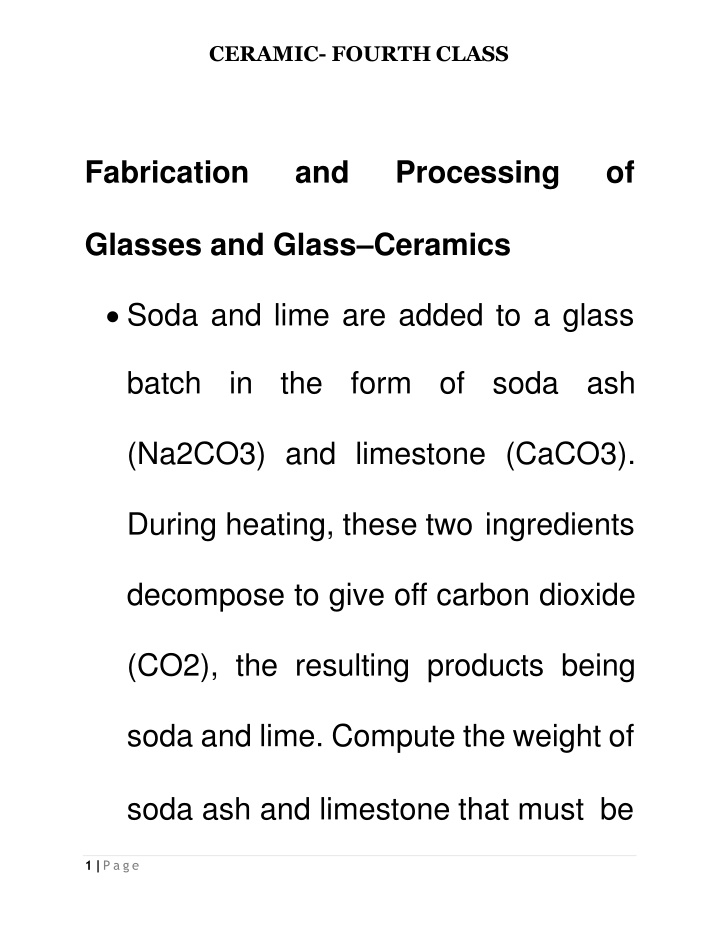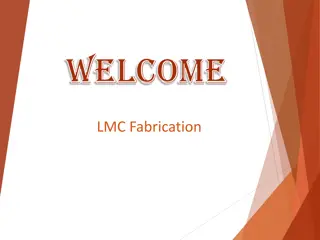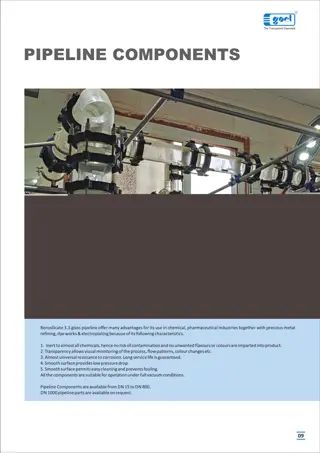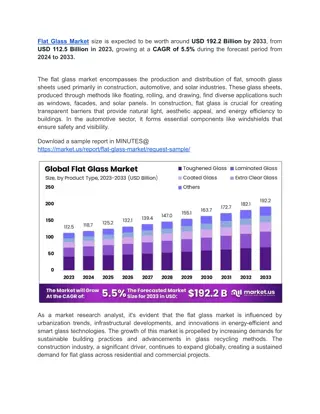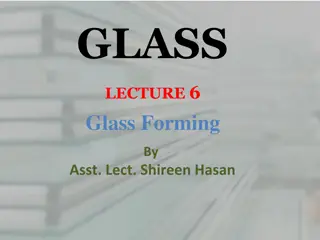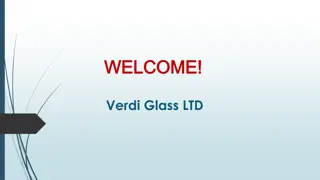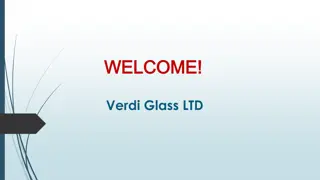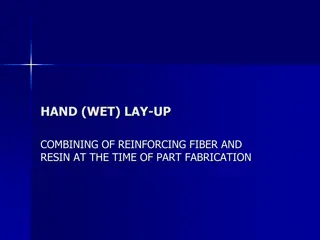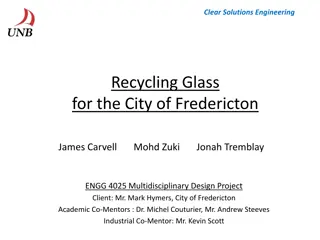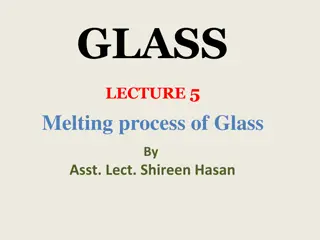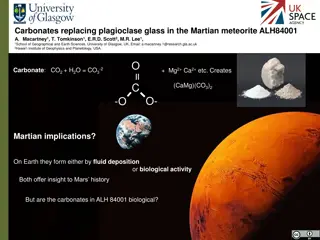Ceramic Fourth Class: Glass and Ceramic Fabrication and Processing Overview
The Ceramic Fourth Class covers topics such as glass and glass ceramic fabrication, composition calculations, thermal properties of different glasses, introduction of thermal stresses in glass pieces, resistance to thermal shock, thermal tempering processes, clay mineral characteristics, whiteware ceramics components, and factors influencing the rate of drying in ceramics.
Download Presentation

Please find below an Image/Link to download the presentation.
The content on the website is provided AS IS for your information and personal use only. It may not be sold, licensed, or shared on other websites without obtaining consent from the author.If you encounter any issues during the download, it is possible that the publisher has removed the file from their server.
You are allowed to download the files provided on this website for personal or commercial use, subject to the condition that they are used lawfully. All files are the property of their respective owners.
The content on the website is provided AS IS for your information and personal use only. It may not be sold, licensed, or shared on other websites without obtaining consent from the author.
E N D
Presentation Transcript
CERAMIC- FOURTH CLASS Fabrication and Processing of Glasses and Glass Ceramics Soda and lime are added to a glass batch in the form of soda ash (Na2CO3) and limestone (CaCO3). During heating, these two ingredients decompose to give off carbon dioxide (CO2), the resulting products being soda and lime. Compute the weight of soda ash and limestone that must be 1| P a g e
CERAMIC- FOURTH CLASS added to 125 lbm of quartz (SiO2) to yield a glass of composition 78 wt% SiO2, 17 wt% Na2O, and 5 wt%CaO. What is the distinction between glass transition temperature and melting temperature? Compare the temperatures at which soda lime, borosilicate, 96% silica, and fused silica may be annealed. 2| P a g e
CERAMIC- FOURTH CLASS Compare the softening points for96% silica, borosilicate, and soda lime glasses. Explain why residual thermal stresses are introduced into a glass piece when it is cooled. Are thermal stresses introduced upon heating? Why or why not? 3| P a g e
CERAMIC- FOURTH CLASS Borosilicate glasses and fused silica are resistant to thermal shock. Why is this so? In your own words, briefly describe what happens as a glass piece is thermally tempered. Glass pieces may also be strengthened by chemical tempering. With this procedure, the glass surface is put in a state of compression by exchanging some of the cations near 4| P a g e
CERAMIC- FOURTH CLASS the surface with other cations having a larger diameter.Suggestone type of cation that, by replacing Na+, will induce chemical tempering in asoda lime glass. Fabrication and Processing of Clay Products Cite the two desirable characteristics of clay minerals relative to fabrication processes. 5| P a g e
CERAMIC- FOURTH CLASS From a molecular perspective, briefly explain the mechanism by which clay minerals become hydroplastic when water is added. What are the three main components of a whiteware ceramic such as porcelain? What role does each component play in the forming and firing procedures? 6| P a g e
CERAMIC- FOURTH CLASS Why is it so important to control the rate of drying of a ceramic body that has been hydroplastically formed or slip cast? Cite three factors that influence the rate of drying, and explain how each affects the rate. Cite one reason why drying shrinkage is greater for slip cast or hydroplastic products that have smaller clay particles. 7| P a g e
CERAMIC- FOURTH CLASS Name three factors that influence the degree to which vitrification occurs in claybased ceramic wares. Explain how density, firing distortion, strength, corrosion resistance, and thermal conductivity are affected by the extent of vitrification. 8| P a g e
CERAMIC- FOURTH CLASS Powder Pressing Some ceramic materials are fabricated by hot isostatic pressing. Cite some of the limitations and difficulties associated with this technique. DESIGN PROBLEM Some of our modern kitchen made of ceramic cookware is materials. 9| P a g e
CERAMIC- FOURTH CLASS List at least three important characteristics required of a material to be used for this application. Make a comparison of three ceramic materials as to their relative properties and, in addition, to cost. On the basis of this comparison, select the material most suitable for the cookware. Written by Assist. Lec Athil S. Ibrahim All the best 10| P a g e
